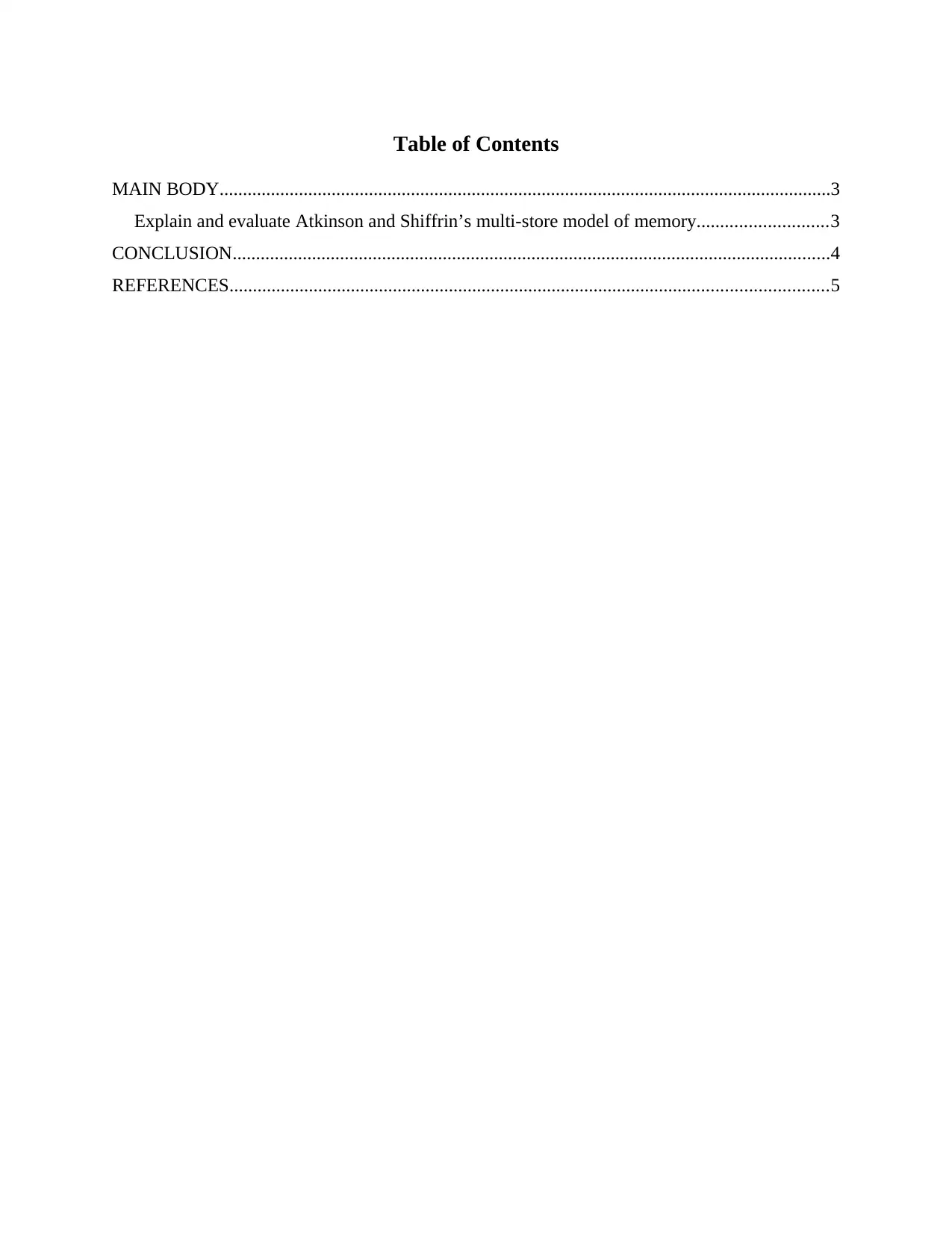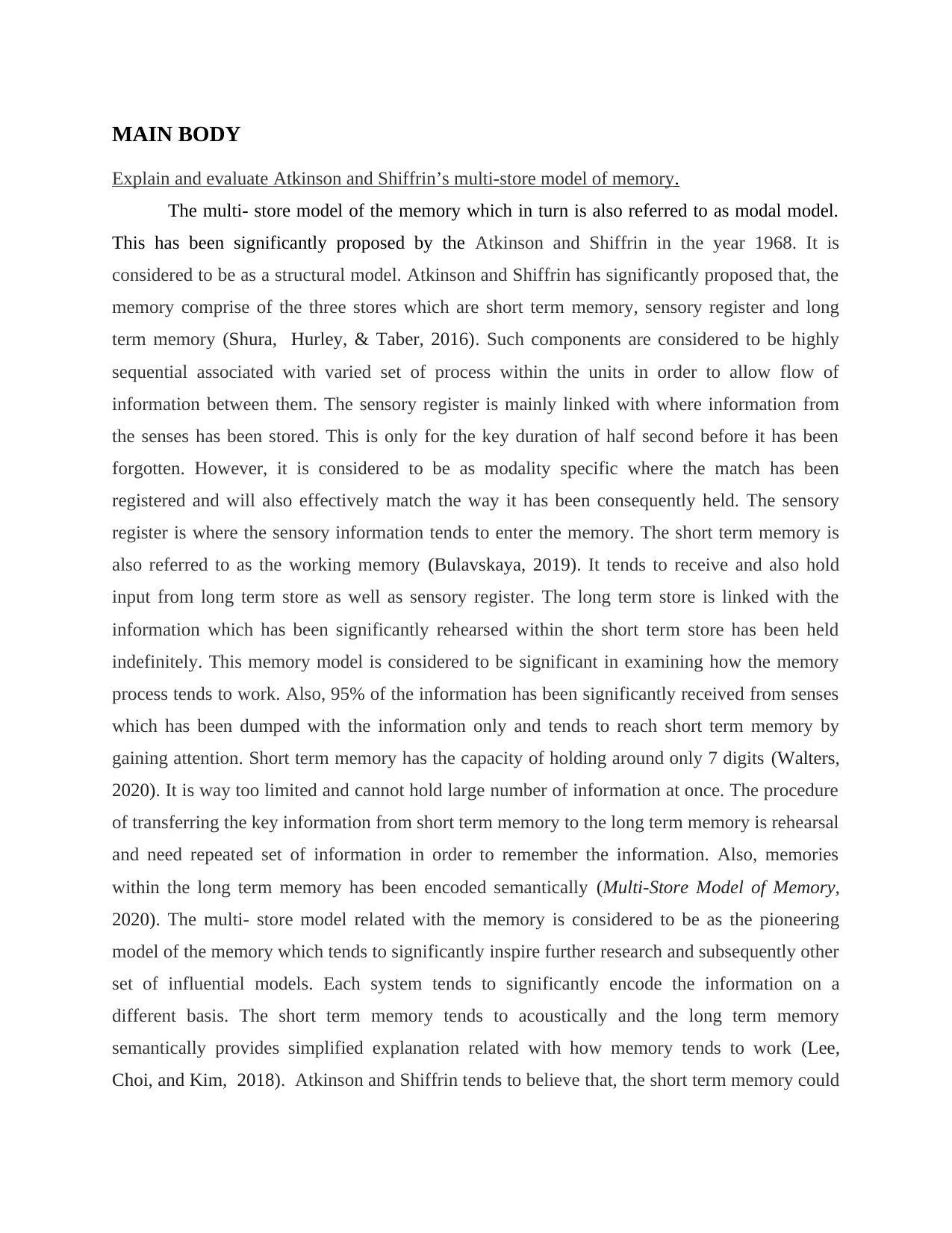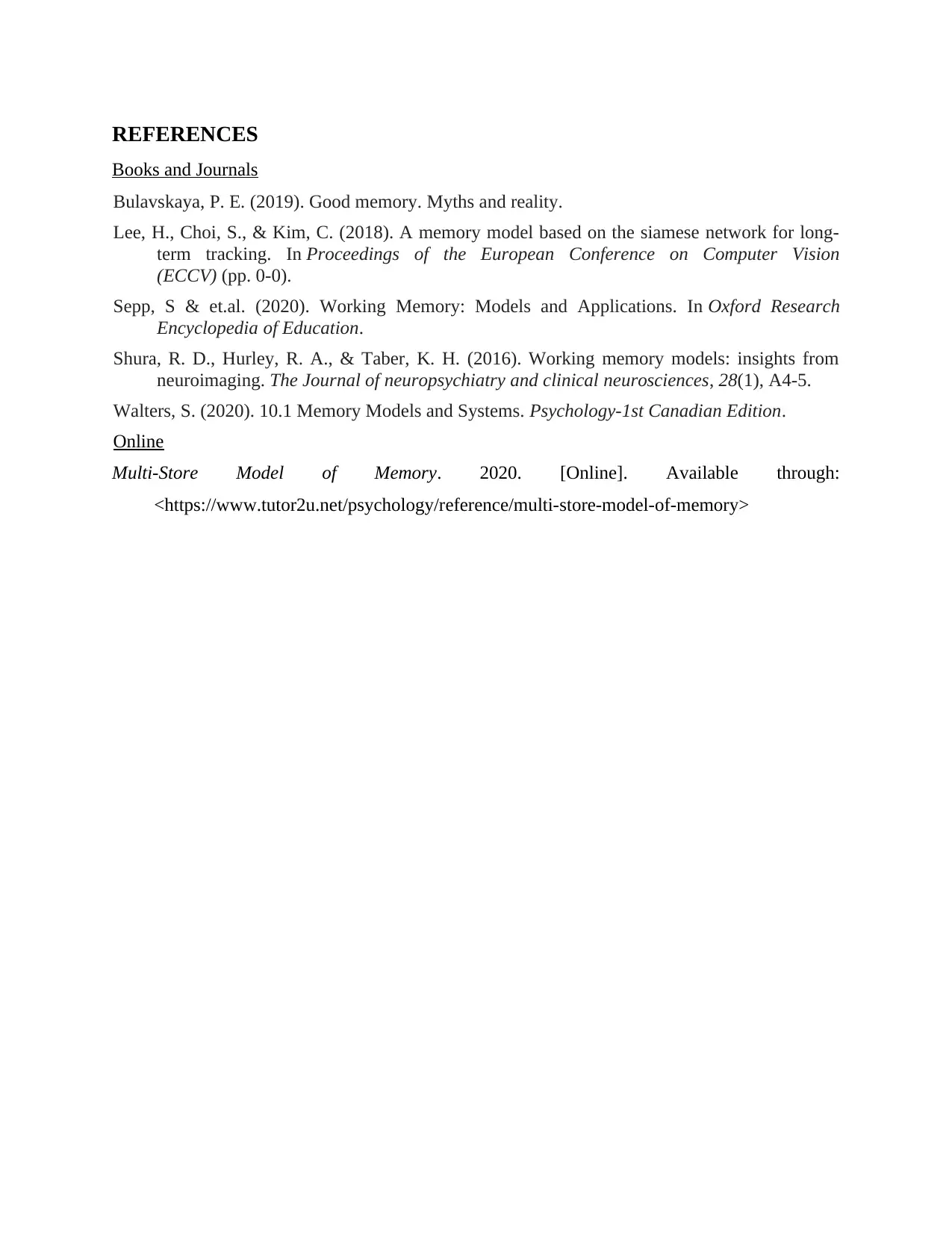An Evaluation of Atkinson and Shiffrin's Multi-Store Model of Memory
VerifiedAdded on 2022/12/30
|5
|767
|74
Essay
AI Summary
This essay provides a comprehensive explanation and evaluation of Atkinson and Shiffrin's multi-store model of memory, also known as the modal model. It breaks down the model's three key components: the sensory register, short-term memory (working memory), and long-term memory. The sensory register briefly stores information from the senses, while short-term memory holds a limited amount of information, receiving input from both the sensory register and long-term memory. The essay explains how information is transferred from short-term to long-term memory through rehearsal. The long-term memory is described as having a vast capacity and encoding information semantically. The essay also highlights the model's significance as a pioneering work that inspired further research. The limitations of short term memory are also discussed. The essay concludes by emphasizing the model's contribution to understanding how memory works and the storage of information within the memory system. References to supporting literature are also provided.
1 out of 5












![[object Object]](/_next/static/media/star-bottom.7253800d.svg)